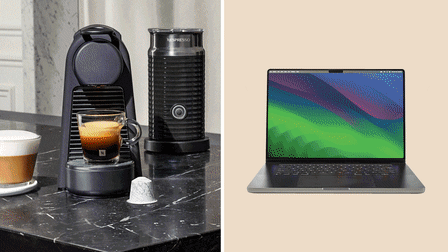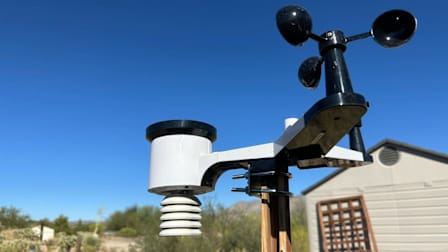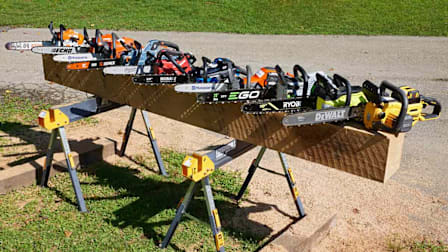Do You Really Need to Rake Your Leaves?
For people who detest the chore, there's an easier way
When you shop through retailer links on our site, we may earn affiliate commissions. 100% of the fees we collect are used to support our nonprofit mission. Learn more.

Raking leaves is fun for about 5 minutes. But for anyone who’s spent longer than that contending with rakes, leaf blowers, tarps, and bags, you’ve probably wondered whether you really need to rake leaves in the first place. The answer is somewhat subjective, and heavily informed by your yard.
Why It's Okay to Leave Fallen Leaves
Surprisingly, it’s not only okay to leave fallen leaves on your lawn, it’s an advantage—at least for the wildlife surrounding your home. The National Wildlife Federation encourages homeowners to skip raking or blowing leaves entirely, and let them be.
The Benefits of Raking Leaves
While leaving fallen leaves in their natural state may help your property’s ecosystem thrive, it may not be ideal if your goal is a well-kept lawn. A thick layer of leaves can starve your grass of sunlight and cause it to die. Lingering leaves can also stain walkways and decks.
In contrast, raking your leaves will help ensure a manicured look to your lawn come spring. The chore also helps to limit the critters you might not want too close to your home—such as ticks and animals, like mice, that can cause damage. For many homeowners, these advantages are worth the hard work.
A Better Way to Handle Leaves
What’s a homeowner to do? It turns out, there’s a middle ground that will be nice to the lawn as well as the (more desirable) living things around you. Simply follow these steps:
1. Redistribute the Leaves
If the leaves are on your garden beds or around your shrubs or bushes, no need to move them. They’ll eventually disintegrate and leave you with a good amount of mulch come spring. Just make sure to rake the leaves away from the crown of perennial plants.
However, if the leaves are on or near decks, patios, and walkways, you’ll need to clear them away. These areas can discolor if leaves are allowed to linger over the winter and into spring. Make sure, too, that leaves are safely away from gutters.
Rake leaves into small piles near a wooded area along your yard’s perimeter and let them provide habitat for animals and insects, in a spot where they’re not a nuisance.
You can use the rake to move the leaves, but if you have a large yard or simply want to make quick work of the task without blisters and an aching back, consider a leaf blower. These three are top performers in our leaf blower ratings.
Step 2: Mulch the Leaves
Most riding and walk-behind mowers are plenty capable of tackling leaves. Using your mower on a leaf pile can churn a lofty pile of leaves into a finer mound of shredded leaves, which can easily break down and nourish your soil in the process. A few tricks:
- Cut in mulch mode. Most lawn mowers default to shooting cut grass or leaves out of a side-mounted chute. But you can outfit your mower with a mulch-plug (often included, or available to buy for about $20 online), which blocks this opening on the side of the mower. In turn, leaves or grass get temporarily trapped in the mower deck, helping the mower shred them down into smaller pieces that break down in less time.
- Mow frequently. If you wait until every last leaf has fallen, your mower may have a tough time tackling a big leaf pile. Instead, mow leaves as they fall to help them break down in batches.
- Make multiple passes. This is helpful if you’re struggling to break down leaves. The leaves will shred more with each pass, and smaller pieces have an easier time biodegrading into the soil. If you happen to need a new mower, the three below are great all-around performers that earn top marks specifically for mulching.
@consumerreports Our leaf blower testing involves testers gathering, piling, raking, and blowing away more than 2,000 pounds of leaves. See the best leaf blowers of the year through the link in our bio. #leafblower #leafblowing #falltok
♬ original sound - Consumer Reports




















